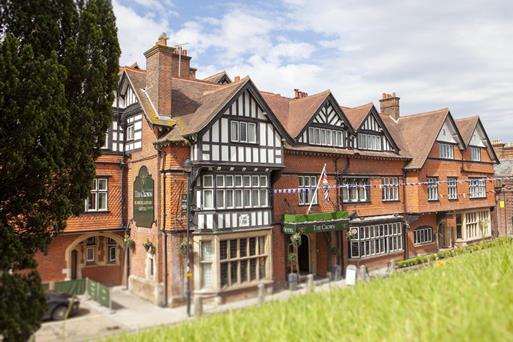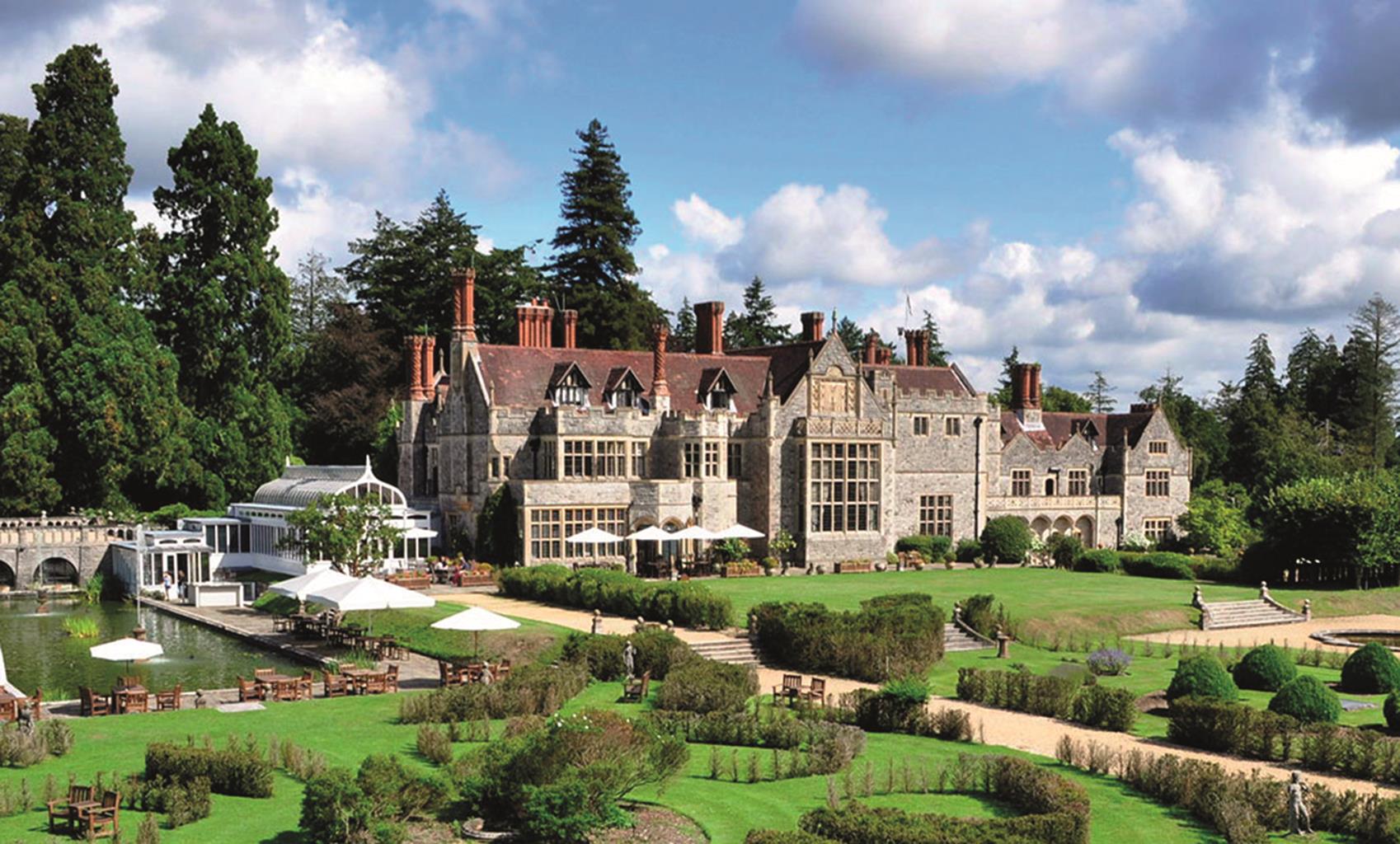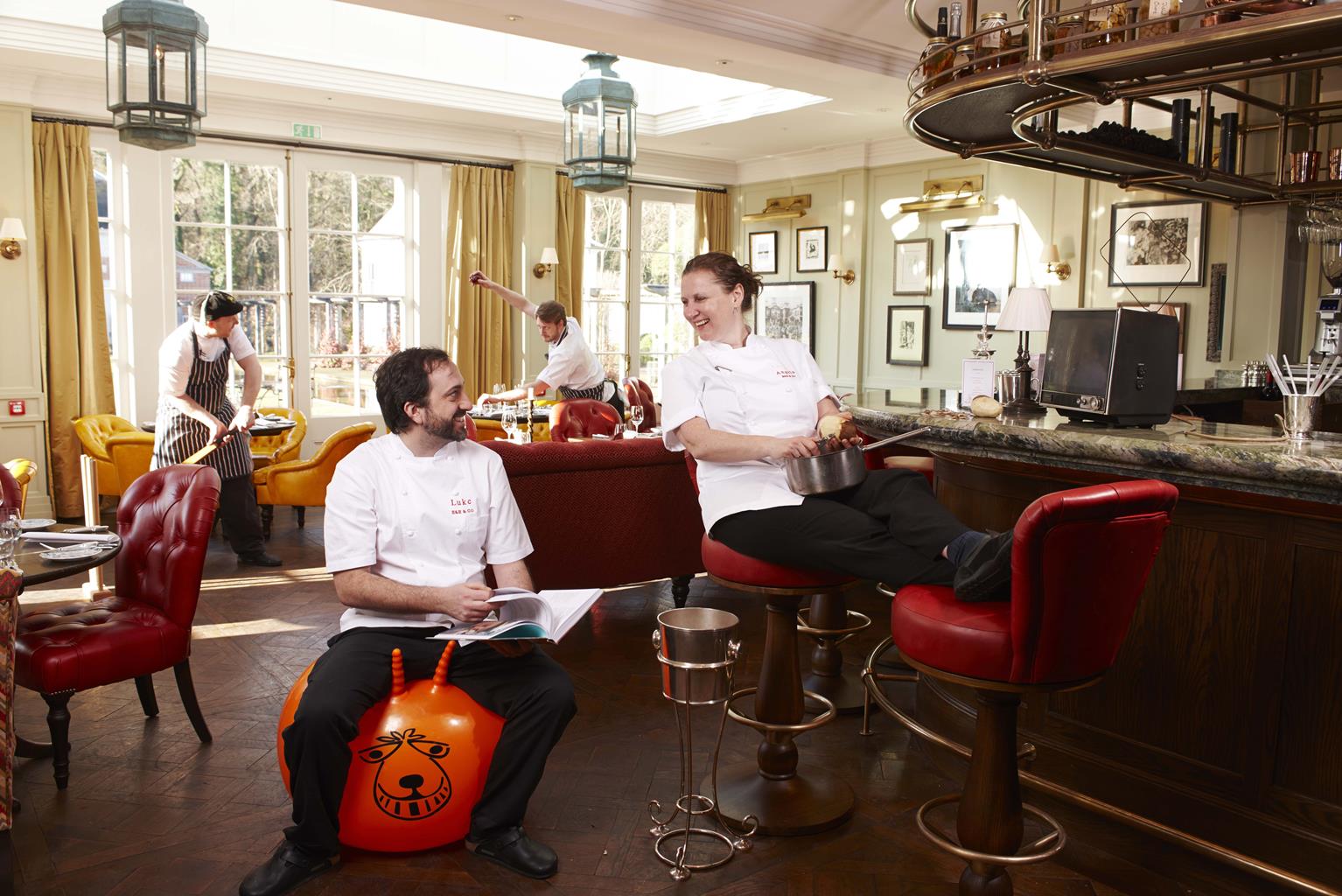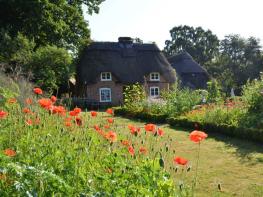The Bell Inn is part of the Bramshaw Golf Club and makes an ideal base for visiting the New…
A New Forest walk from Fritham

A peaceful New Forest hamlet reveals its explosive history.
5.7 miles (9.2kms)
About the walk
Fritham is an unspoilt commoning community nestling in a remote and peaceful enclave of pasture within the boundaries of the New Forest National Park. A scattering of cottages and farms, a chapel and a charming thatched pub are all that line the winding dead-end lane that leads straight on to the gorse- and heather-covered Fritham Plain. Many of the old cottages in the village have Forest Rights, which entitle the owners or tenants to graze cattle, horses and donkeys on the open forest, and to collect turf and wood for fuel. Pannage or Mast Rights also allow pigs to forage for acorns and beech masts in autumn to prevent the ponies from eating too many. These rights and the traditional commoners’ way of life have existed for over 900 years. Here, on the forest fringe, you are likely to see domestic livestock, including enormous pigs, wandering, foraging and mixing with the New Forest ponies.
A Shattered Peace
Fritham has not always been an idyllic rural scene. Its peace was shattered in 1865 when a German, Eduard Schultze, opened a gunpowder factory in an isolated glade beside the tree-fringed Eyeworth Pond or Irons Well. Fritham’s remote setting and the ready availability of charcoal, the main constituent of black gunpowder, made it an ideal location. Tracks from the village were strengthened to take the huge carts and the river was dammed to provide water power for the mills. As demand for smokeless sporting gunpowder increased, so the factory grew, eventually employing over 100 people from as far afield as Fordingbridge. After supplying gunpowder during World War I, the factory was sold in 1923 and the operation was moved to Scotland. Things went quiet for time – but, early in World War II, 4,000 acres (1,620ha) of nearby heathland were enclosed to create the Ashley Walk bombing range. Within its 9-mile (14.5km) perimeter fence, the site was a maze of natural and artificial targets that included bunkers, trenches and steel plates, as well as two massive concrete walls at Cockley Plain and Leaden Hall. The range was the testing ground for a wide variety of military hardware, including the largest bomb to be dropped in England and the famous ‘Dam Buster’ bouncing bomb. Over 400 craters were counted on aerial photos taken after the range closed in 1946. Now, more than 60 years later, the small brick observation shelter that you’ll see near Ashley Cross is the only remaining building left standing from this time.
Walk directions
Turn left out of the car park and head downhill along the road.
Keep ahead at the foot of the hill, crossing the bridge at Eyeworth Pond, and follow the short gravel track to a low wooden barrier at Oak Tree Cottage. Leave the barrier on your left, take the narrow but well defined path that heads north into Eyeworth Wood, and follow it for 0.5 miles 800m).
After a while, the path leads onto a tree-studded heath, with far-reaching views. Continue for a further 550yds (503m) across Homy Ridge, on the main track, as far as a stocky Scots pine tree standing at the edge of a small wood on your right.
The path divides here. Take the left-hand fork, and walk down into an open grassy valley and then up the other side to a car park at Telegraph Hill.
Turn left beside the B3078 for 20yds (18m), before turning left again onto the gravel track directly opposite Hope Cottage. The track bears left soon after passing a small, seasonal pond at Studley Head and dives briefly beneath holly and oak trees before breaking back out onto the heath.
Continue past a small pond on your right, just a few paces beyond the low mound of a tumulus. Follow the track south towards Amberwood Inclosure, ignoring tracks to the left and the path that branches off to your right near Ashley Bottom. A little further on, look for the World War II brick observation shelter, located on your right.
As you reach the trees, turn left at a waymarked junction with the cycle track on the edge of Amberwood Inclosure, and dive steeply down the wellmade gravel track into the woods. Ignore all turnings and follow the waymarked route through the forest and over the bridge at Latchmoor Brook. Continue on the main track, bearing left just after the bridge. The trees gradually drop behind as the cycle track winds its way up through the trees, and there are glimpses of Eyeworth Lodge away to your left. A steady climb brings you to the green at Fritham. Turn right to return to the car park.
Additional information
Gravel forest tracks, heathland and woodland paths
Ancient woodland and open heathland
Great for dogs, but keep under strict control around wildlife and cyclists
OS Explorer OL22 New Forest
Forestry Commission car park beyond Royal Oak
None on route
WALKING IN SAFETY
Read our tips to look after yourself and the environment when following this walk.
Find out more
Also in the area
About the area
Discover Hampshire
Hampshire’s varied landscape of hills and heaths, downlands and forests, valleys and coast is without rival in southern England. Combine these varied landscapes and terrains with secluded and idyllic villages, complete with thatched and timber-framed cottages and Norman churches, elegant Georgian market towns, historic ports and cities, restored canals and ancient abbeys, forts and castles, and you have a county that is paradise for lovers of the great outdoors.
If you’re a walker, stride out across the high, rolling, chalk downland of the north Hampshire ‘highlands’ with far-reaching views, walk through steep, beech-clad ‘hangers’ close to the Sussex border. Or perhaps take a gentler stroll and meander along peaceful paths through unspoilt river valleys, etched by the sparkling trout streams of the Test, Itchen, Avon and Meon. Alternatively, wander across lonely salt marshes and beside fascinating coastal inlets or, perhaps, explore the beautiful medieval forest and heathland of the New Forest, the jewel in Hampshire’s crown.
Nearby stays
Restaurants and Pubs
Nearby experiences
Recommended things to do
Why choose Rated Trips?
Your trusted guide to rated places across the UK
The best coverage
Discover more than 15,000 professionally rated places to stay, eat and visit from across the UK and Ireland.
Quality assured
Choose a place to stay safe in the knowledge that it has been expertly assessed by trained assessors.
Plan your next trip
Search by location or the type of place you're visiting to find your next ideal holiday experience.
Travel inspiration
Read our articles, city guides and recommended things to do for inspiration. We're here to help you explore the UK.















